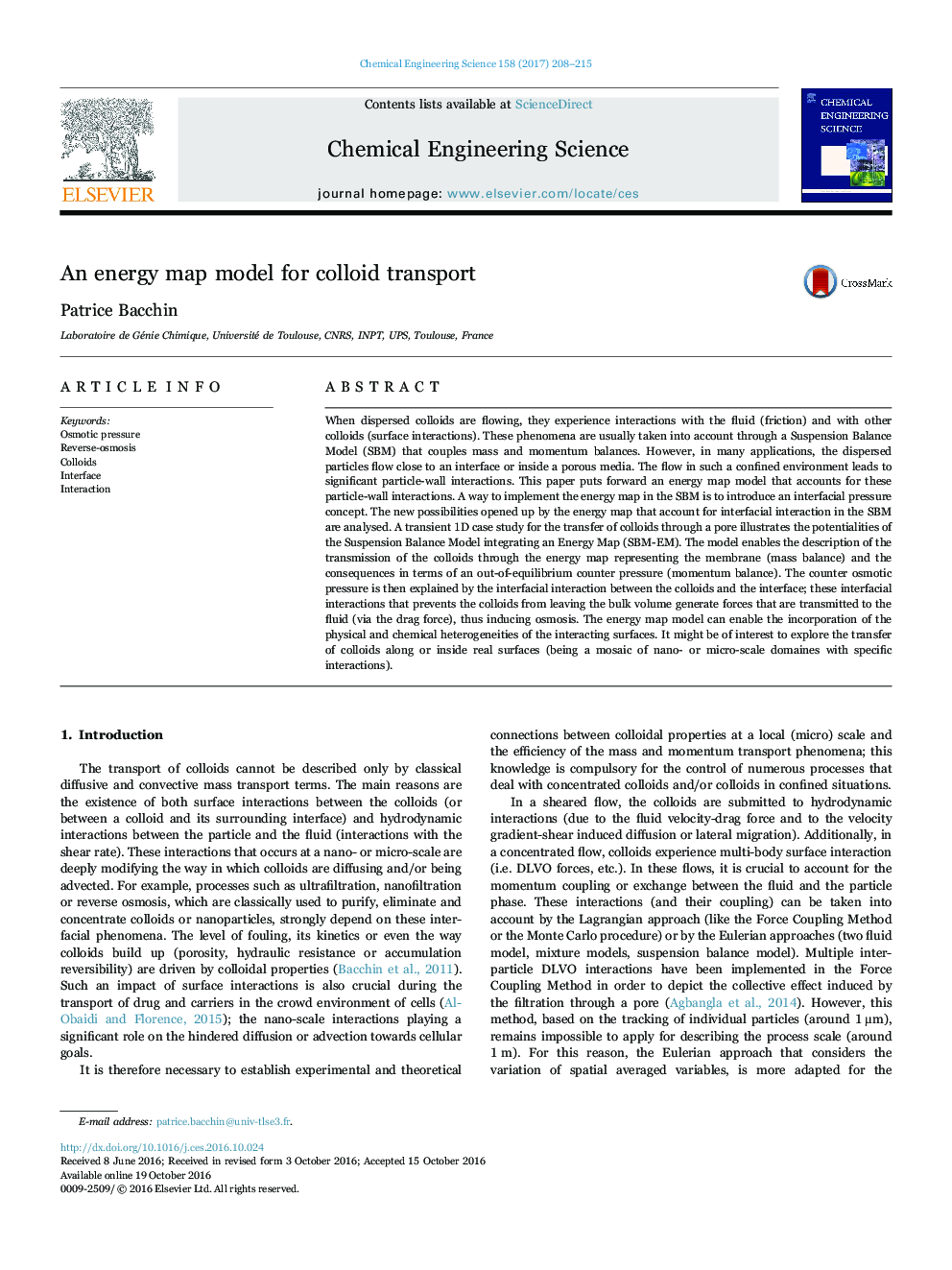| کد مقاله | کد نشریه | سال انتشار | مقاله انگلیسی | نسخه تمام متن |
|---|---|---|---|---|
| 6467965 | 1423261 | 2017 | 8 صفحه PDF | دانلود رایگان |
- The energy map concept relates the effect of interfaces to the colloids transport.
- The energy map is implemented in the formalism of a suspension balance model.
- The map enables the description of the transmission of colloids through a membrane.
- The energy map enables the description of the counter pressure during filtration.
- The counter pressure is theoretically linked to the colloid/interface interaction.
When dispersed colloids are flowing, they experience interactions with the fluid (friction) and with other colloids (surface interactions). These phenomena are usually taken into account through a Suspension Balance Model (SBM) that couples mass and momentum balances. However, in many applications, the dispersed particles flow close to an interface or inside a porous media. The flow in such a confined environment leads to significant particle-wall interactions. This paper puts forward an energy map model that accounts for these particle-wall interactions. A way to implement the energy map in the SBM is to introduce an interfacial pressure concept. The new possibilities opened up by the energy map that account for interfacial interaction in the SBM are analysed. A transient 1D case study for the transfer of colloids through a pore illustrates the potentialities of the Suspension Balance Model integrating an Energy Map (SBM-EM). The model enables the description of the transmission of the colloids through the energy map representing the membrane (mass balance) and the consequences in terms of an out-of-equilibrium counter pressure (momentum balance). The counter osmotic pressure is then explained by the interfacial interaction between the colloids and the interface; these interfacial interactions that prevents the colloids from leaving the bulk volume generate forces that are transmitted to the fluid (via the drag force), thus inducing osmosis. The energy map model can enable the incorporation of the physical and chemical heterogeneities of the interacting surfaces. It might be of interest to explore the transfer of colloids along or inside real surfaces (being a mosaic of nano- or micro-scale domaines with specific interactions).
195
Journal: Chemical Engineering Science - Volume 158, 2 February 2017, Pages 208-215
